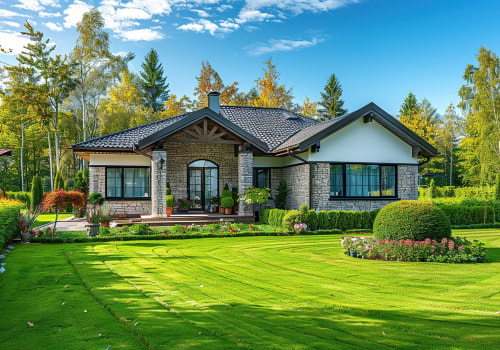Hardscaping refers to the non-living elements of a landscape design, such as patios, walkways, retaining walls, and other structures made from materials like stone, concrete, and wood. These elements serve as the foundation of outdoor spaces, providing structure, functionality, and visual interest. While softscaping—comprising plants, flowers, and trees—brings life and color to a garden, hardscaping offers durability and form, shaping how the space is used and enjoyed. Knowing when to incorporate hardscaping into your landscape design is crucial for creating a balanced, functional, and aesthetically pleasing outdoor environment. This guide will explore the best times to use hardscaping and how it can enhance your overall landscape design.
When Functionality Is a Priority
One of the primary reasons to use hardscaping is to enhance the functionality of your outdoor space. If your yard is on a slope or has uneven terrain, hardscaping elements like retaining walls and terraces can help level the ground, making it more usable. Retaining walls not only prevent soil erosion but also create flat areas for planting, seating, or play spaces. Similarly, installing pathways or walkways allows for easy movement throughout the yard, guiding guests and family members to different areas without trampling the grass or garden beds. Patios and decks provide defined spaces for outdoor dining, entertaining, or relaxing, turning your yard into an extension of your home’s living space.
Hardscaping is also essential when creating a designated area for specific activities, such as a fire pit, outdoor kitchen, or a swimming pool. These features require a stable, durable foundation that can support furniture, appliances, and heavy foot traffic. By incorporating hardscaping, you ensure that these areas are not only functional but also aesthetically cohesive with the rest of your landscape.
When Low Maintenance Is Desired
Hardscaping is an excellent choice for homeowners looking to reduce the amount of time and effort required to maintain their outdoor spaces. Unlike plants that require regular watering, pruning, and fertilizing, hardscape elements are relatively low maintenance. Once installed, features like stone patios, brick pathways, and concrete retaining walls require little upkeep, making them ideal for those who prefer a more permanent solution that doesn’t demand constant attention.
In areas where water conservation is a concern, hardscaping can be particularly beneficial. By reducing the amount of lawn or garden space that needs watering, you can significantly lower your water usage. For example, replacing a portion of your lawn with a stone patio or gravel garden not only saves water but also reduces the need for mowing and weeding. Additionally, hardscaping materials like pavers and gravel allow for better drainage, preventing water from pooling and reducing the risk of erosion.
When Defining Outdoor Spaces
Hardscaping is invaluable for defining different areas within your outdoor space. If you have a large yard, hardscape elements can be used to create distinct zones for various activities. For instance, a stone walkway can separate a garden area from a play space, while a pergola can define an outdoor dining area. This zoning helps create a sense of order and purpose, making the space more enjoyable and easier to navigate.
Hardscaping can also be used to create visual focal points that draw the eye and add interest to your landscape. Features like water fountains, sculptures, or even a beautifully designed retaining wall can serve as the centerpiece of your garden, enhancing the overall aesthetic and creating a cohesive look. By combining hardscape elements with carefully selected plants, you can achieve a balanced and harmonious design that highlights the strengths of both.
When Incorporating Outdoor Lighting
The strategic use of hardscaping is particularly effective when paired with outdoor lighting in Boca Raton. Lighting plays a crucial role in highlighting the beauty and functionality of hardscape elements, ensuring that your outdoor space can be enjoyed day and night. For example, installing lights along pathways or steps not only enhances safety but also adds a dramatic effect by casting shadows and illuminating textures. Uplighting can be used to accentuate retaining walls, water features, or architectural elements, creating a stunning visual impact after dark. By combining hardscaping with thoughtful lighting design, you can extend the usability of your outdoor space and create a warm, inviting atmosphere.
When Durability and Longevity Are Important
Hardscaping is the go-to solution when durability and longevity are a priority. Natural elements like plants and flowers can change with the seasons, but hardscape features provide a stable, lasting foundation that can withstand the elements year-round. Materials such as stone, brick, and concrete are resistant to weathering, ensuring that your outdoor spaces remain functional and attractive for years to come.
This durability is particularly important in areas with extreme weather conditions, where softscape elements may struggle to thrive. Hardscaping provides a reliable solution that maintains its integrity regardless of the weather, allowing you to enjoy your outdoor space without worrying about constant repairs or replacements.
Conclusion: The Strategic Use of Hardscaping
In conclusion, hardscaping is a crucial component of landscape design that enhances functionality, reduces maintenance, defines spaces, and ensures durability. Whether you're looking to create a more usable outdoor area, reduce your environmental footprint, or simply add beauty and structure to your yard, hardscaping provides the tools to achieve these goals. By incorporating hardscape elements at the right time and in the right way, you can transform your outdoor space into a cohesive, functional, and aesthetically pleasing environment that meets your needs and reflects your style. And when paired with strategic outdoor lighting, your hardscaped spaces can become a focal point that enhances both the daytime and nighttime appeal of your property.








